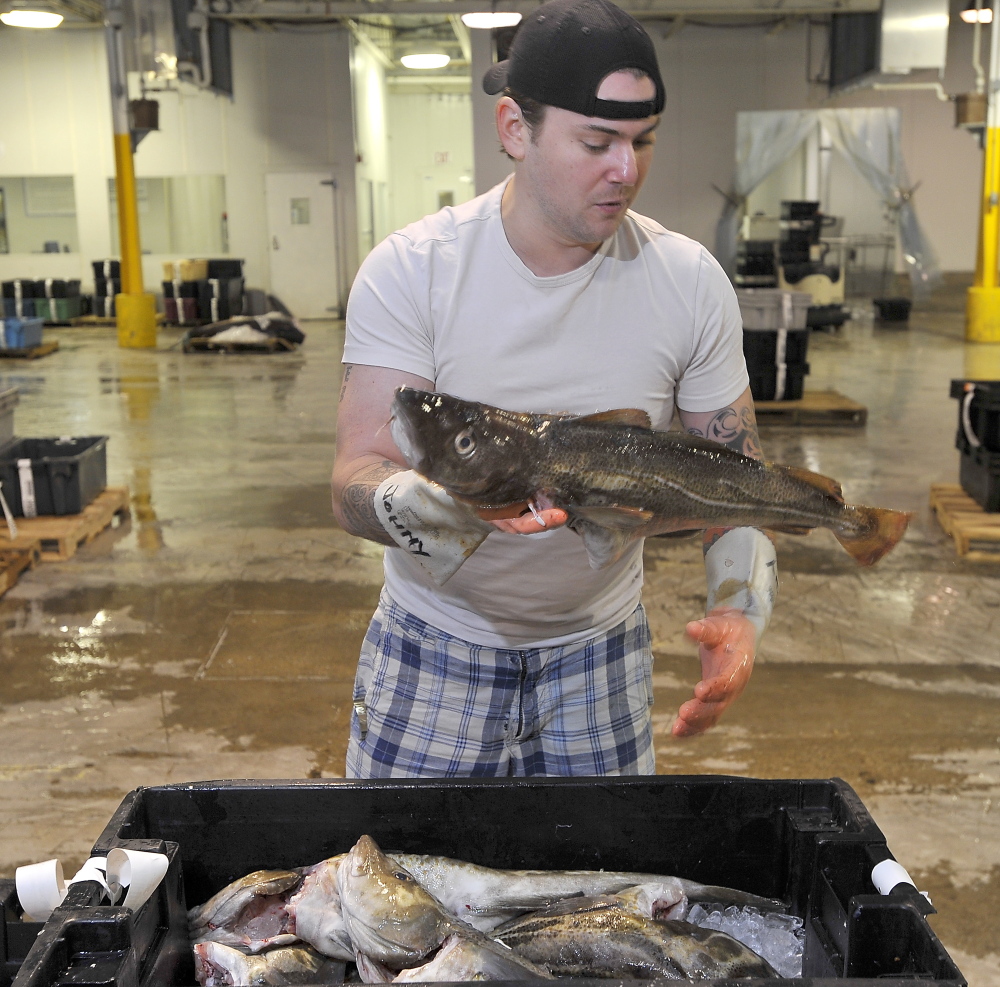The maximum amount of cod that fishermen can take from the Gulf of Maine will be reduced by 75 percent next year, a federal regulatory council decided Tuesday.
The New England Fishery Management Council voted to reduce the total allowable cod catch limit from 1,550 to 386 metric tons. Regulators have said the level of cod spawning in the gulf is at an all-time low – 3 to 4 percent of its target level, a steep decline from three years ago.
Regulators said the quota must be reduced to rebuild the struggling fishery, on which Maine, New Hampshire and Massachusetts fishermen rely to harvest the popular food fish. Many fishermen were prepared for the blow after recent emergency actions by the federal government to restrict the fishery, said Ben Martens, executive director of the Maine Coast Fishermen’s Association.
“That number is really scary for Maine fishermen,” he said. “It’s definitely going to put a hurt on them.”
The quota applies to the fishing year that begins on May 1. The ruling comes about a week after the National Oceanic and Atmospheric Administration announced the emergency closure of commercial and recreational cod fishing in parts of the gulf. The emergency restrictions hold until May 12 and include a 200-pound limit on how much a vessel can catch during one trip.
Cod catches off New England states have plummeted. Massachusetts’ catches fell from 6,810 metric tons in 2011 to 1,881 in 2013, while Maine’s numbers fell from more than 560 metric tons in 2009 to less than 130 metric tons last year, state and federal data show.
The management council’s Scientific and Statistical Committee said before Tuesday’s meeting that 386 metric tons represents an acceptable limit.
The council is scheduled to consider more cod restrictions on Wednesday at a meeting in Newport, Rhode Island. The council’s vote to reduce the quota and any further restrictions it approves are pending NOAA approval.
Send questions/comments to the editors.



Success. Please wait for the page to reload. If the page does not reload within 5 seconds, please refresh the page.
Enter your email and password to access comments.
Hi, to comment on stories you must . This profile is in addition to your subscription and website login.
Already have a commenting profile? .
Invalid username/password.
Please check your email to confirm and complete your registration.
Only subscribers are eligible to post comments. Please subscribe or login first for digital access. Here’s why.
Use the form below to reset your password. When you've submitted your account email, we will send an email with a reset code.